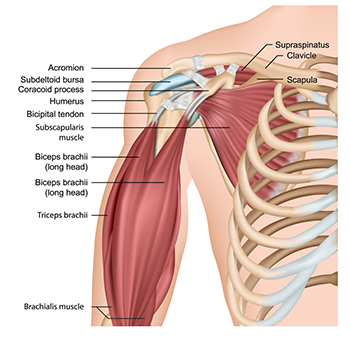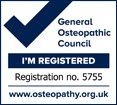Shoulder Pain Chelmsford

The Shoulder Joint
The shoulder joint (glenohumeral joint) is a ball and socket joint made up of the shoulder blade (scapular), collar bone (clavicle) and top of the upper arm which is roughly ball shaped (head of humerus). It is a major joint connecting the upper limb to the trunk and is very mobile at the expense of stability.
As with all joints in the body it is contained within a joint capsule and is surrounded by muscles & tendons, ligaments, nerves and blood vessels. There is a small space between the ball and the top of the socket that is filled by the important rotator cuff tendons. The nature of the small space makes this joint vulnerable to inflammation and impingement problems from overuse, injury and wear & tear.
Possible Causes of Shoulder Pain:
- Frozen shoulder – a painful condition with severe restricted movement.
- Tendonitis – inflammation of any of the tendons which are in or cross the joint.
- Rotator cuff tear or tendonitis – pain may be felt in the shoulder or upper arm.
- Impingement – pain and stiffness at certain points when trying to lift the arm, often involving underlying tendonitis and wear & tear.
- Bursitis – the bursa is a fluid filled sack that protects tendon movement but can become inflamed itself.
- Acromioclavicular problems – pain is often felt at the tip of the shoulder and can be affected by osteoarthritis. Small bony projections or osteophytes can form which in turn lead to further tendon damage.
- Arthritis – conditions such as osteoarthritis, rheumatoid arthritis and polymyalgia rheumatica can all generate shoulder related symptoms

How can osteopathy help?
Shoulder problems can be complex and it is important to have a correct diagnosis before embarking on treatment. At Oaklea Osteopathy in Chelmsford, experienced osteopath Amanda Miles will assess you fully by taking a detailed case history and examining you. Treatment will depend on your diagnosis and other factors such as age, general health and fitness and is designed to reduce pain, improve mobility, improve function and improve strength.
Treatment may involve your neck and upper back as well as these areas often stiffen up and become painful in response to what is happening with the shoulder, or in some cases they be contributing to the shoulder problem.
Many shoulder problems respond well to gentle exercises to stretch the shoulder and strengthen the area and if this is appropriate for you, Amanda will provide you with an individually tailored exercise programme.
Occasionally, there may be a need to refer you back to your GP if Amanda thinks you may benefit from further investigation or tests. With shoulders this can include ultrasound scans or x-rays among others. Amanda will always discuss this with you first.
Useful Links
Shoulder Pain
Versus Arthritis - Shoulder Pain Information






